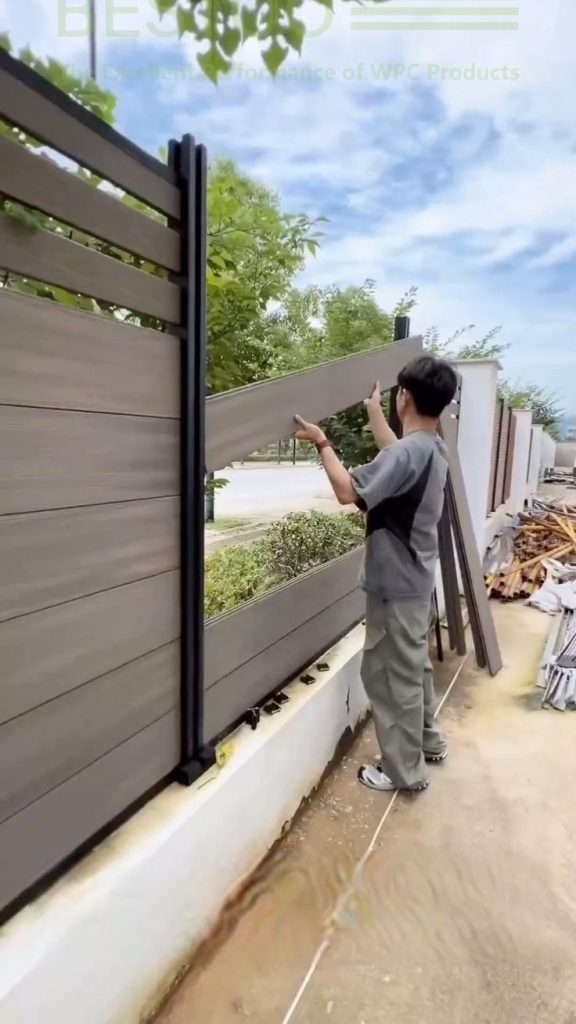The depth to which Y fence posts are driven into the ground is a critical factor in determining the overall strength, stability, and longevity of your fence. Drive them too shallow, and the fence will be prone to leaning, sagging, or even falling over under pressure. Drive them too deep, and you waste post material and make future adjustments or removal more difficult. There isn’t a one-size-fits-all answer, as the optimal depth is influenced by several key variables that need careful consideration.
The “One-Third Rule” as a Starting Point
A common guideline in fencing is the “one-third rule,” which suggests that approximately one-third of the post’s total length should be buried underground. For example, a 6-foot (1.8-meter) Y post would ideally have 2 feet (0.6 meters) buried, leaving 4 feet (1.2 meters) above ground for the fence height. This rule provides a good baseline for general-purpose fencing in average soil conditions and is a useful starting point for planning. However, it’s crucial to understand that this is a guideline, not an absolute law, and adjustments are often necessary based on specific circumstances.
Factors Influencing Driving Depth
Several factors can necessitate deviating from the one-third rule, requiring either deeper or, in rare cases, slightly shallower installation.
1. Soil Type and Conditions
The composition and consistency of the soil are perhaps the most influential factors.
- Loose or Sandy Soil: In very loose, sandy, or poorly compacted soils, Y posts will have less natural grip. To achieve adequate stability, you will need to drive the posts deeper, potentially burying closer to 40-50% of the post’s length. This extra depth provides more surface area for the soil to grip, increasing resistance to lateral forces and uplift.
- Clay or Rocky Soil: Dense clay or rocky soils offer excellent natural compaction around the post. While still aiming for substantial depth, you might find that the one-third rule provides sufficient stability. However, driving into extremely rocky ground can be challenging, and you might need to adjust post spacing or consider alternative installation methods if rocks are impenetrable.
- Wet or Saturated Soil: Prolonged periods of wetness can soften soil, reducing its ability to hold posts firmly. In areas prone to waterlogging, driving posts deeper can help maintain stability during these periods.
2. Type of Fencing Wire and Tension
The amount of tension applied to the fencing wire directly impacts the forces exerted on the posts.
- Highly Tensioned Wire (e.g., High-Tensile Plain Wire, Barbed Wire): Fences with tightly strained wires exert significant pulling forces on the end, corner, and even line posts. These posts, especially the end and corner ones, must be driven deeper and often require robust bracing to counteract the tension. Even line posts in a highly tensioned system benefit from deeper installation to prevent leaning.
- Loosely Strung Wire (e.g., Some Electric Fences, Temporary Netting): For fences where the wire is not under extreme tension (e.g., a single strand electric fence where the shock is the primary deterrent), slightly shallower depths might be acceptable for line posts, as the forces on them are minimal. However, corner and end posts still need to be secure.
3. Purpose of the Fence and Animal Type
The intended use of the fence and the animals it will contain also dictate the required stability.
- Livestock Containment (Cattle, Horses): Larger, stronger animals can exert considerable pressure on a fence. Posts for livestock fences, particularly those containing cattle or horses, should be driven deeper to provide maximum resistance against pushing, leaning, and rubbing.
- Security Fences: For security fences, deeper installation enhances the fence’s overall integrity and makes it more difficult to breach or push over.
- Garden Protection/Temporary Fences: For lighter-duty garden fences or very temporary enclosures, a slightly shallower depth might be acceptable for line posts, as the forces are generally lower.
4. Post Height Above Ground
Ultimately, the desired height of your fence above ground will influence the total length of the Y post you purchase and, consequently, how much of it must be buried. If you need a 5-foot high fence, and you’re aiming for 2 feet buried, you’d need a 7-foot Y post. Always ensure you purchase posts long enough to achieve both the desired above-ground height and sufficient burial depth.
In summary, while the “one-third rule” is a good starting point, always assess your specific soil conditions, the type of wire and tension, and the purpose of your fence. Prioritizing deeper installation, especially for corner and end posts and in challenging soil, will ensure a stable, durable, and effective Y post fence that stands strong for years to come.

